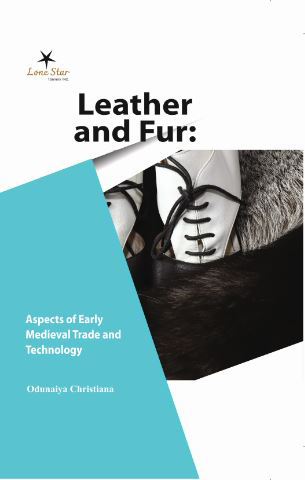
Odunaiya Christiana pursued her Postgraduate Diploma in Leather Technology from the Public University, Sheffield and attained her Master of Science in Advanced Engineering Design from Science University, Brunel. Her elementary areas of scholarly interests lie in the fields of leather for clothing and leather suede. Christiana has been an eminent speaker in seminars across Europe, United States of America, Canada and Middle Asia. She has also won 5 awards and recognitions for her researches and services.
"Leather, skin, and fur belonged to one of the most important material groups in prehistory to serve different human needs. Leather, similarly to textiles and wood, is a perishable material and rarely survives. It can already be used to produce objects such as straps or belts, but also molded paddings like inside a container or as coating material, like sheets on chest coverings. The present book investigates the utility of animal skin from Ancient times to the Medieval Period. The book contains seven chapters. Chapter 1 is an introduction to leather: then and now. The craft of making leather dates back as far as 3000 to 5000 B.C., when leather was used for sandals, clothes, buckets and more. The leather industry has been making a huge progress to manufacture a sustainable and future proof material, bringing comfort, luxury and joy to consumers. Chapter 2 focuses on leather for clothing. As long as humans have existed, they have made clothing from leather. In the Stone Age people also used the skin of animals to make tent walls and straps, as well as clothing. Chapter 3 is leather and suede that details on the types of suede leather, the process to making suede, the sewing leather and suede, and how to clean suede. Suede is a type of leather, and it can be derived from any type of animal skin that is used in the production of normal leather. Compared to normal leather, suede is far more permeable, which means it lacks the waterproofing benefits of leather. It is, therefore, best to wear suede garments indoors or in situations in which encountering adverse environmental conditions is unlikely. Chapter 4 highlights the equipment and supplies for leather sewing. Most of the equipment and supplies used for general sewing can he used to sew suede and leather. Some extra tools are needed, but none are expensive and the use of them will ensure the success of your project and simplify each step of the process. Chapter 5 focuses on the technology of fur. It covers the fur clothing, the fur processing & design, wool, fur, and leather: hazardous to the environment, and the fur industry. Chapter 6 sheds light on basics of pattern making, and leather pattern making and pattern cutting. Chapter 7 focuses on the global leather trade. Leather and leather products are among the most widely traded products worldwide, and they are based on a renewable and readily available resource. It is estimated that the international trade exceeds US$ 80 billion annually, and it is expected to continue growing alongside the increase in population and urbanization of developing and emerging countries. "

© Copyright 2021, Lone Star Tannery Inc. All Rights Reserved.